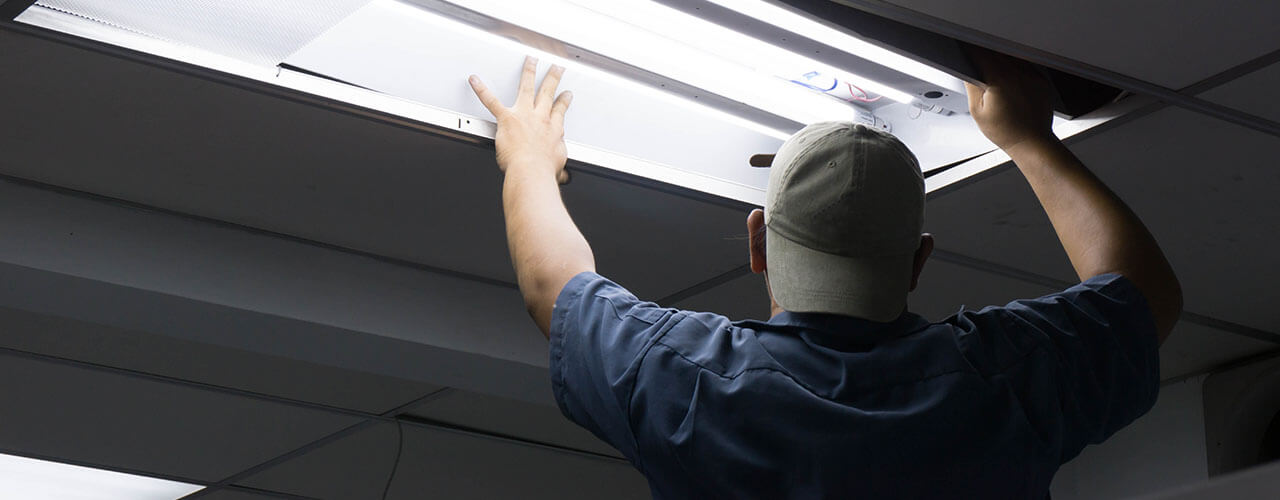In the last 40-50 years, the modern office has gone through a number of evolutions. From cubicles to open-plan offices, different layouts come and go, and flexible working practices have shifted from the coworking world into a corporate one.
As office trends come and go, one thing remains a constant: the impact of your office on your health and well-being. Moreover, one of the biggest enemies to your office-based health has also been a constant: the fluorescent light.
From a financial perspective, fluorescent lights make sense. They’re cheap to buy and last about 12 times longer than a regular incandescent bulb. But fluorescent lights are also incredibly bad for your health.
This revelation may not come as a surprise to anyone who has ever worked under fluorescent lights. If I asked you to picture the best office environment you have ever worked in, chances are you’re imagining a light and airy space. I doubt your ideal office will be windowless and illuminated with rows of fluorescent lighting.
You’re not alone. Research shows more than two-thirds of US office workers complain about the lighting situation in their workplace.
The drawbacks of fluorescent lights
When it comes to fluorescent lighting, a vast range of studies show causal links between prolonged exposure to fluorescent lights and various negative effects to your health and well-being.
Much of this comes down to the poor quality of light from a fluorescent bulb, which gives off a limited spectrum of light. The Sun, in contrast, provides a light that spans the entire visible spectrum.
A lot of our body chemistry is related to our circadian rhythms, which determines sleep cycle, relaxation, and stimulation levels. If you do not get sufficient exposure to sunlight, research shows that these rhythms and your resulting hormone levels can be easily disrupted. Other studies indicate the right lighting can decrease depression and improve your mood, alertness, energy, and productivity.
Another major problem with fluorescent lights is that they tend to produce a harsh glare and can flicker. This flicker may occur so quickly that you don’t consciously see it, but it can produce migraines, headaches, and eye strain as a direct result.
Poor productivity
Your office’s light levels can also influence your productivity. Individuals who work in artificial light are more likely to feel tired towards the end of the work day, compared to those working in natural light.
Your quality of life is also affected by light exposure. Further research reveals individuals exposed to 173% more natural light during the work day sleep an average of 46 more minutes each night.
Another study also found office workers with more light exposure at the workplace tended to sleep longer, as well as experience better sleep quality, are more physically active, and even have a better quality of life compared to office workers with less natural light exposure.
Your work-based wellness should not be taken lightly (pun intended). It’s important to receive a sufficient amount of natural light during the working day to boost your well-being, health, and productivity, even if that means taking time out and soaking in the sunlight outside your workspace.









